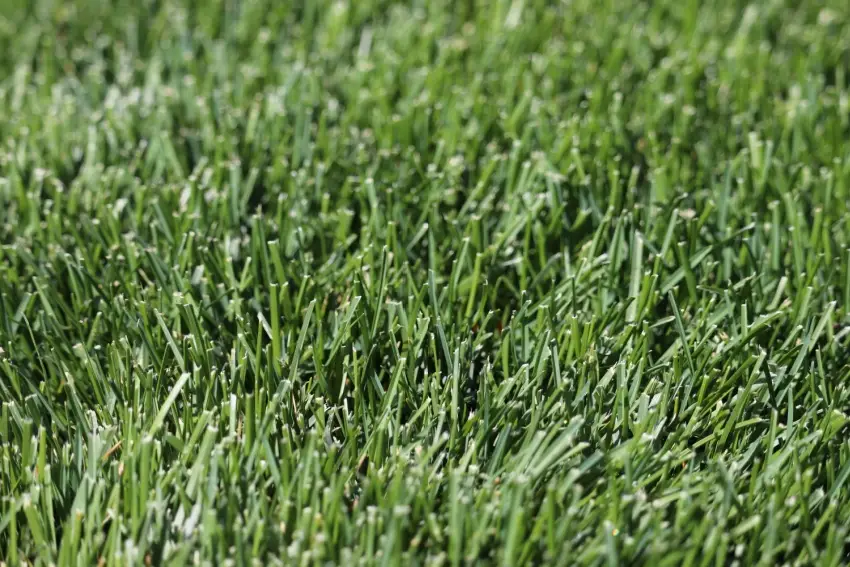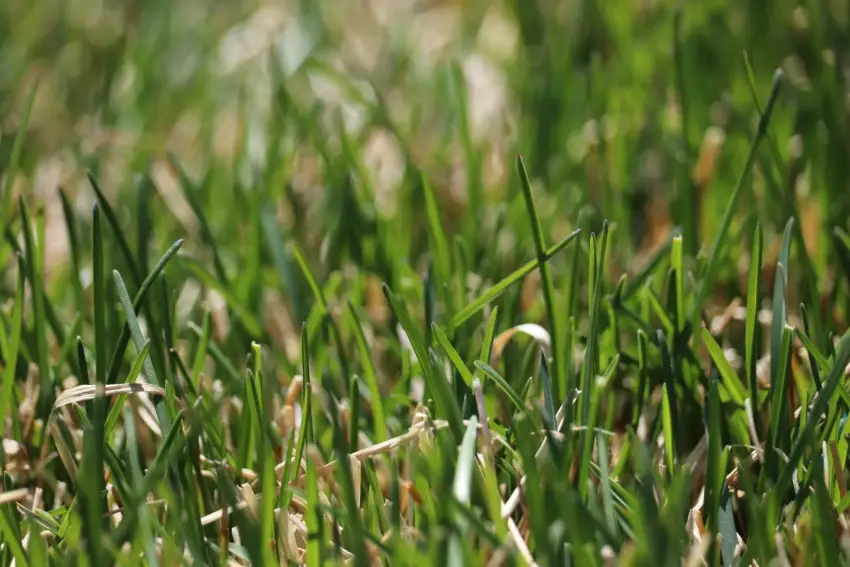
The Grounds Guys provide expert insights on maintaining Kentucky Bluegrass.
|
Let’s not mince words. In the cooler areas of the country, Kentucky bluegrass is the gold-standard turfgrass option for residential and commercial lawns. Why? It offers thick, full coverage and gorgeous coloring. However, a picture-perfect Kentucky bluegrass lawn doesn’t happen by accident. This turfgrass requires a lot of care and can be more susceptible to common lawn issues such as pests and drought. Before you pick Kentucky bluegrass as your turfgrass, understand the major Kentucky bluegrass pros and cons so you know exactly what you’re getting into.
What Is Kentucky Bluegrass?
Kentucky bluegrass (Poa pratensis) is one of the most popular cool-season grasses in the United States and is prized for its ability to create a dense, attractive lawn. Despite its name, Kentucky bluegrass actually originated in Europe and northern Asia, not Kentucky. (Also, it’s not Kentucky blue grass. Bluegrass is one word, like the famous Appalachian music style.)
Even with its overseas origins, Kentucky bluegrass is practically synonymous with the American lawn, at least in cooler parts of the country. It does best in regions with cool summers and moderate winters and has one of the best cold tolerances of any turfgrass. The catch? Kentucky bluegrass can struggle in hotter climates. Its shallow roots make it vulnerable to drought, and it can turn brown and go dormant when temperatures rise too high.
What Does Kentucky Bluegrass Look Like?

For many homeowners and property managers, Kentucky bluegrass represents the “perfect lawn” appearance. It provides a striking blue-green color and grows into a lush, carpet-like lawn when maintained properly. Overall, it offers a classic, manicured look with excellent uniformity.
Does Kentucky Bluegrass Spread?
Kentucky bluegrass spreads primarily through a network of underground stems called rhizomes. These rhizomes grow horizontally beneath the surface of the soil, extending outward from the parent plant. As they grow, the rhizomes develop nodes from which new grass shoots emerge.
This spreading method allows Kentucky bluegrass to grow in a dense pattern that can quickly fill in your lawn. The result is the thick, tight-knit turf that makes Kentucky bluegrass so popular.
Pros and Cons of Kentucky Bluegrass
While Kentucky bluegrass has a huge fan following throughout the country, it’s not the right choice for every homeowner and property manager. Understanding the main pros and cons of Kentucky bluegrass will help you make the best turfgrass choice for your property.
Kentucky Bluegrass Pros
There are several reasons Kentucky bluegrass continues to be one of the most popular turfgrasses around:
- Beautiful blue-green coloring
- Lush, uniform appearance
- Holds up well to foot traffic
- Good cold tolerance and winter hardiness
- Strong ability to self-repair
Kentucky Bluegrass Cons
Unfortunately, Kentucky bluegrass doesn’t grow well in all regions of the country. Other disadvantages include the following:
- High maintenance requirements compared to other turfgrasses
- Poor shade tolerance
- Poor drought tolerance
- Poor heat tolerance
- High susceptibility to several common lawn diseases
If you’re still not sure if a Kentucky bluegrass lawn is right for your property, consult with your trusted local landscaping service provider for a personalized recommendation.
Planting Kentucky Bluegrass
Kentucky bluegrass establishes well from seed but does take longer to germinate than many other turfgrasses. You might need to wait anywhere from two weeks to an entire month before the first shoots of Kentucky bluegrass appear. Compare that with the one or two weeks it takes certain other turfgrass seeds to germinate.
The best time to plant Kentucky bluegrass is in the fall when the soil temperature is warm but the high heat of summer has passed. You can also try planting Kentucky bluegrass seeds in the spring, but a hot summer may damage your vulnerable new grass.
Another planting opinion is sod. You’ll get an instant lawn, which can be ideal if you don’t want to stare at a bare yard for several weeks before your seeds germinate. Just keep in mind that whether you use Kentucky bluegrass seeds or sod to start your lawn, you’ll need to water your yard regularly at first to get your grass established.
How to Care for a Kentucky Bluegrass Lawn
One of the main drawbacks of a Kentucky bluegrass lawn is its relatively high maintenance requirements. To get the beautiful, thick lawn of your dreams, you’ll need to work for it. Start your Kentucky bluegrass care routine by mowing your grass regularly during the growing season with a goal of keeping your grass between 2.5 and 3 inches tall in the spring and fall. You can let your grass grow a little taller in the summer.
Fertilize your lawn in the spring and fall to give it all the nutrients it needs during the growing season. Pests and weeds tend to pop up during the summer months, so this is the best time to perform weed and pest control.
In the fall, overseed if you notice any bare spots in your lawn.
Keep Your Lawn Beautiful with Kentucky Bluegrass Care
Taking care of your Kentucky bluegrass lawn isn’t always easy, but the results are well worth the effort. When properly maintained, Kentucky bluegrass will give you the quintessential American lawn.
Want a Kentucky bluegrass lawn but don’t have the time or desire to put in the work it requires? You can still get the lawn of your dreams with help from The Grounds Guys®. We would be happy to plant a Kentucky bluegrass lawn if appropriate for your region. We can then perform ongoing lawn care and seasonal care to ensure your Kentucky bluegrass looks its best. We’re proud to perform residential and commercial landscaping services throughout the United States by using experienced and knowledgeable local service professionals.
Request a free estimate today.
This article is intended for general informational purposes only and may not be applicable to every situation. You are responsible for determining the proper course of action for your home and property. The Grounds Guys are not responsible for any damages that occur as a result of this blog content or your actions. For the most accurate guidance, contact The Grounds Guys location nearest you for a comprehensive, on-site assessment.